-
Riding Schooling and Training
-
Health and Veterinary
-
Management
-
Mind Matters
-
Buying and Selling
-
Insurance Advice
FAQs
Featured Professional
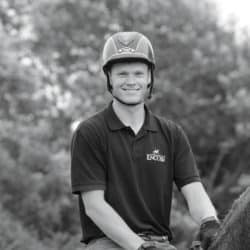
Daniel Moseley
Showjumper Daniel Moseley has represented Great Britain at Young Rider and Senior level at European Championships and Nations Cups
Does your horse tend to see monsters rather than strides? Daniel Moseley helps you teach him to be focused and unflappable
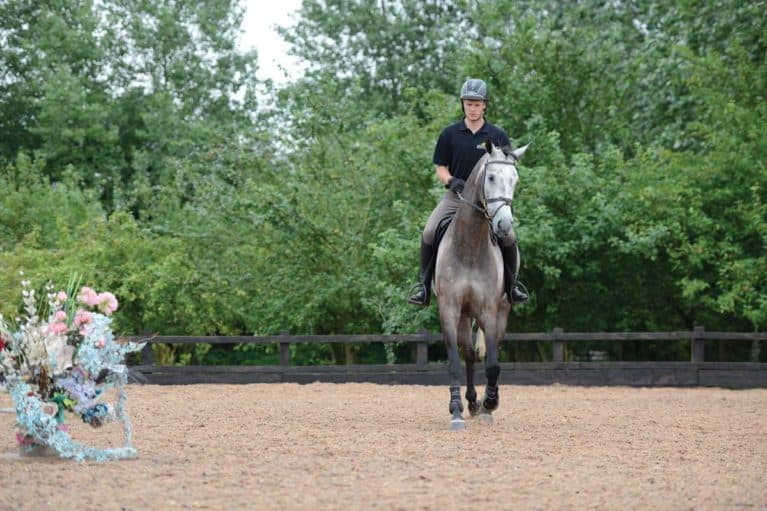
If you ride a particularly sharp horse, you may be disheartened at the prospect of ever getting him to jump calmly around a new course. However, it’s worth playing the long game with horses like this. As a professional rider, I prefer a sharp, spooky horse to a very bold one. A horse who’s very brave, particularly when he’s young and still learning the ropes, tends to have less respect for the fences and will be more likely to rush and be careless with his jump, resulting in knocked rails. A spooky horse, on the other hand, may require a bit more time and patience, but he’ll always respect the fences and take great care not to touch them.
Top tip – Spooky horses are good for more experienced, bold riders, but if you’re working on your own confidence then a bold, consistent horse is a better choice for you. Your trainer can help you find the right horse for your riding ability.
Moving along
When I first get on a horse, I don’t ask for too much. My top priority at the beginning of my warm-up routine is that he’s freeing up his body and working without tension – something that can be tricky for a spooky horse, particularly when in a new environment. Often, these sharper types will find it easier to focus once they’re working a bit harder or jumping around a course, but for the first five minutes of your session, incorporate lots of big, flowing figures-of-eight, asking him to trot between fences and past scary objects.
After that, start to ask for more of an outline and incorporate more advanced transitions. This is when you can introduce different stride lengths in canter and begin using steps of leg-yield to encourage your horse to move towards objects that he may be worried about. The key to a successful warm-up on a hot, sharp horse is to keep everything very calm – don’t get flustered by his sharpness or rise to it, as this will cause it to escalate. If you can keep your cool, he’ll learn to have confidence in your consistency, no matter how inconsistent his working environment may be.
Top tip – Replicate spooky show conditions at home by hanging colourful banners and placing objects such as flower pots around your school.
Top tip – Keep your aids simple and clear. Don’t fall into the trap of putting your leg on and holding with your hand, because this gives your horse mixed signals and essentially trains him to stop. Keep your aids consistent right up until the point of take-off.
Slow and steady
Patience is essential when you’re working with a spooky horse, particularly if that spookiness is paired with inexperience. Giving him lots of exposure to various sights and sounds by hiring venues is a brilliant way to build up his confidence and experience, without putting any pressure on him.
Slow and steady really does win the race when it comes to moderating sharpness. A lot of riders worry that their horse will have a look at a spooky fence, so they push them on, thinking that they’re riding positively. This means their horse doesn’t have time to take the fence in and he’s likely to end up frightening himself. You’ll have less control of his body the faster you go, so don’t be afraid to slow everything down – if you’re schooling, make the scary fence small enough that you can trot in, giving your horse time to have a good look at it. Be positive and balanced, keep control of his shoulder and make sure that he’s responsive to your leg aids, then you’ll give him the best chance of figuring out the question and giving you the correct answer.
Top tip – I’m not a fan of letting my horses walk up to scary fences to have a look, because they then know that something frightening is coming up and spend the whole time on the course worrying about it.
Exercise one – introduce fillers
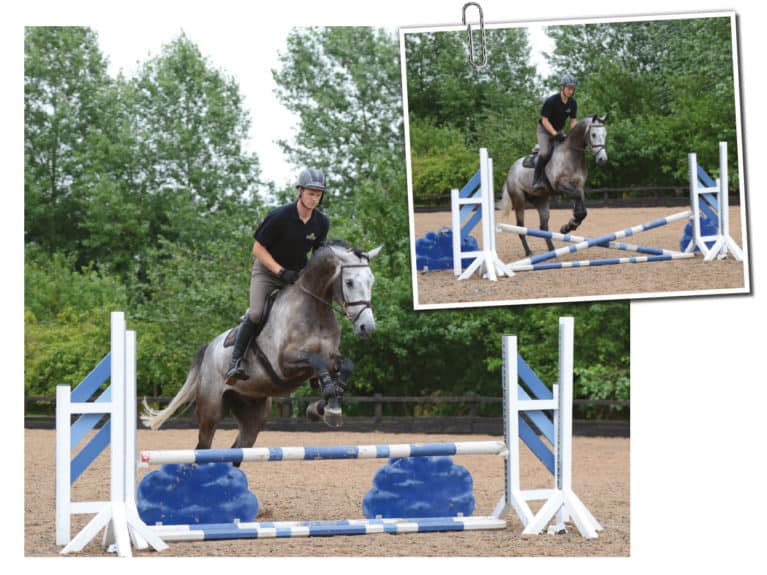
What it does: This is a great way to introduce fillers without asking your horse to do anything difficult. Increasing the difficulty incrementally by moving the fillers in gradually and raising the fence slowly allows your horse to progress and challenge himself without being overfaced.
How to set it up: Build a cross-pole with fillers set at each side of the fence. If your horse is really inexperienced, you can place fillers around the arena for him to get used to the sight of them, too.
How to ride it: Come into the cross-pole in a steady trot, allowing your horse to look at what’s being asked of him but without taking your leg off. Once he’s jumped the fence happily in both directions, move the fillers closer together. Continue to bring them in incrementally until he’s jumping over them. Depending on how your horse reacts, this can happen in one schooling session or over the course of several. Take it slowly and don’t get frustrated, and you’ll reap the rewards.
Top tip – Less is more when it comes to a sharp horse. If you work too hard to fix an issue it can make the problem worse, so if you’re schooling over a tricky fence, aim for one nice effort over it, then leave it at that for the day. End on a positive note rather than endlessly drilling your horse.
Exercise two – work on water
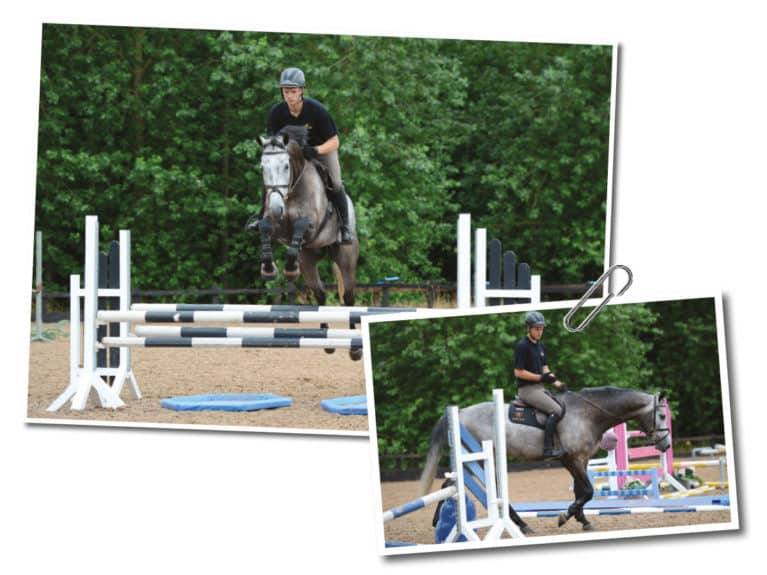
What it does: If you or your horse tend to get hung up about water trays, daily exposure is the best way to deal with them and make them a non-issue. Taking the path of least resistance will lead to long-lasting, positive results.
How to set it up: Build a small, straightforward upright or cross-pole and place a water tray underneath it. If you haven’t got a water tray, you can easily make something similar using blue tarpaulin stapled around two poles.
How to ride it: Keep the small fence set up in your arena and every time you ride, no matter what you’re working on, pop your horse over it once in each direction, until it becomes routine. If he’s really worried about it, spend the first few days with the water tray set up on its own and ride schooling figures around it, leg-yielding towards it and so on, then begin to jump it. This low-pressure way of acclimatising your horse to the water tray is much better than overtraining him and making an issue of the whole thing.
Top tip – I once had a horse who was so worried about water trays that he wouldn’t go anywhere near them. I ended up putting one in his stable, so he had to come face-to-face with it in order to leave. It’s rare that a horse will have this much of a problem with something, but if he does then it sometimes pays to get creative!
Your Comments
One thought on “How to calm a spooky showjumper”
Leave a Reply
You must be logged in to post a comment.




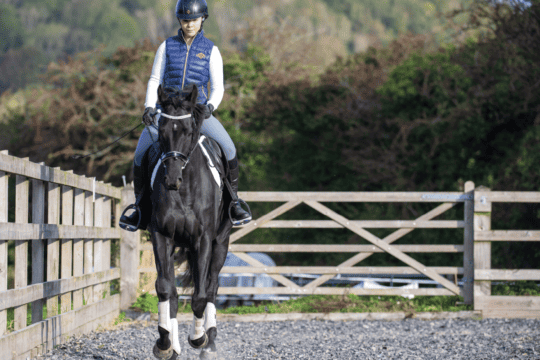
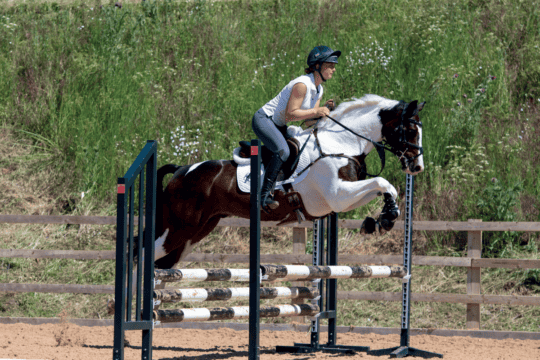
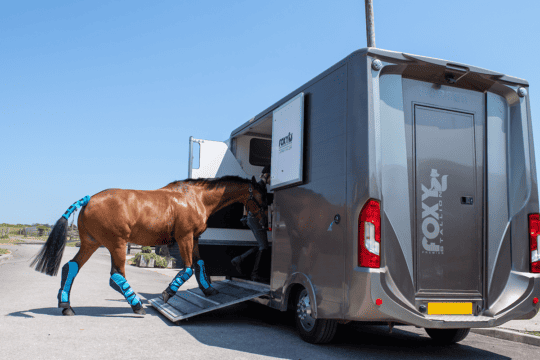









This article is fantastic advice thank you. I have a hot and reactive broodmare-turned-show jumper and sometimes I have rides that are so frustrating and feel like I take 3 steps back with her spookiness sometimes. We have done the suggested filler advice and it has helped in that regard. Just wish I could get her to be consistent with her reactivity- some days its very unbearable and she reacts to everything, other days she barely reacts.